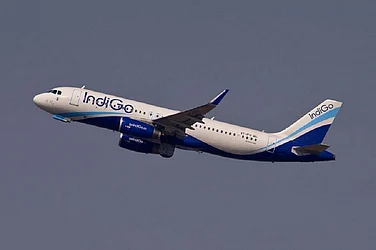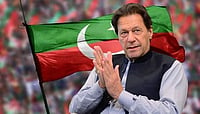ON February 19, when the Supreme Court dismissed the seven petitions challenging the Centre's power to grant licences to private operators for basic telephony, it gave a much-needed respite to the Rao Government, reeling as it is under a seemingly unending blizzard of bad news. The mood in the Communications Ministry is upbeat. Claimed Communications Minister Sukh Ram: "It's a victory of truth for the ministry and the policies of the Prime Minister." And a much-relieved Mahendra Nahata, promoter-director of Himachal Futuristic Communications Ltd (HFCL), which is at the centre of the privatisation storm, rushed to Tirupati to thank the good Lord.
Telecom Commission Chairman R.K. Takkar said that by upholding the validity of the procedures adopted by the Centre in evaluating bids for basic telecom services, the Supreme Court had paved the way for proceeding apace with telecom privatisation. "As the verdict is one of the speediest disposals of writ petitions in judicial history, I couldn't help crooning to myself, 'Sare jahan se achchha Hindostan hamara'," he enthused. "Also, the confidence of foreign investors in the Indian market has been restored."
"By April 1997, services are expected to start in Delhi, Haryana, Uttar Pradesh (west), Orissa and Maharashtra and a month later in Rajasthan, Karnataka, Tamil Nadu, Andhra Pradesh, Gujarat, Punjab and Bihar," he added.
The telecom industry's reaction to the judgement has decidedly been more subdued and less optimistic. While the verdict has cleared all hurdles for the ministry to implement its National Telecom Policy, for the industry it has heralded the beginning of yet another long, gruelling obstacle race. The single largest roadblock to privatisation is finance. The ability of private operators to mobilise huge sums needed to pay up licence fees and for building networks remains a multi-billion dollar question, saysZ.A. Baig, director, Tata Communications.
"Telecom companies will now have to put their money where their mouth is and there is no escape from it," he notes. Much as the industry would like to forgive and forget the ultra-high bids by HFCL, which upset the calculations of all players, the fact remains that the hefty budgets required have raised doubts about the stability and viability of the projects, according to Baig.
P.K. Sandell, president, Telecom Industry Services Association, agrees: "Because of HFCL's high bids, forcing others to match them, licence fees constitute a disproportionately large percentage—60 per cent—of project costs. Moreover, financial institutions don't lend money for licence fees."
But apart from the viability of the projects themselves, the crux of the financing problem is the availability of funds, given the suffocating liquidity crunch in the economy. To put it simply, Indian financial institutions do not have enough money to spare for private telecom companies. Foreign financial institutions, on the other hand, are wary about pumping cash into a sector where the risks are high and the gestation period long. There is also a ceiling on the money that can be raised through external commercial borrowings. Moreover, the falling value of the rupee has made borrowing from international markets a far more expensive proposition than, say, even nine months ago.
According to industry sources, the three leading Indian financial institutions—the ICICI, IDBI and IFCI—in a joint meeting had estimated that they would collectively be able to dole out about Rs 4,000 crore per year for all infrastructure projects. Half of this amount will be consumed by the power sector, and the rest will be distributed between other infrastructure sectors including telecom, transport and roads.
Obviously, the telecom industry needs much more. For instance, HFCL and its partners need to pump in between Rs 3,000crore and Rs 4,000 crore in the first three years for setting up networks in Delhi, Haryana, Uttar Pradesh (west) and Orissa (for which the company has already been issued letters of intent), apart from the Rs 2,400 crore for licence fees in the same period. Adding to the promoters' burden is the fact that in the first three years of operation, telecom companies will incur massive cash losses. Banks don't fund cash losses, which will have to be borne by the private operators themselves.
Vijai Kapur, chairman of the Confederation of Indian Industry's telecom committee, suggests that to beat the resource crunch, "innovative ways and means should be devised to raise money". The Department of Telecommunications (DOT) and industry should sit together to see how money can be raised. For his part, Sandell suggests that a mechanism should be evolved whereby money brought in by foreign partners in excess of their equity contribution (foreign partners are allowed to hold a maximum 49 per cent stake) should be eligible for dividend but not repatriation. But all this is easier said than done.
Meanwhile, another major hitch to the telecom privatisation process continues to bother industry—that of high reserve prices, the benchmark or the minimum licence fee fixed by DOT. In the second round of bidding on January 1, because of the high reserve prices, there were no takers for eight circles—Kerala, West Bengal, Madhya Pradesh, Uttar Pradesh (east), Assam, the North-east, Madhya Pradesh, and the Andaman and Nicobar Islands.
Major players such as the AT&T-Birla combine and the US West-BPL alliance stayed out of the second round of bidding because of the high reserve prices. Enquiries by Outlook revealed that these two major alliances as well as other consortia are not enthusiastic about bidding at the reserve prices in the third round of bidding as well. Takkar says that offers will be invited for the third round of bidding by the first week of March. Despite the apprehensions of telecom players about the liquidity crisis and their lack of enthusiasm to take on circles where the cost of operations may be too high for operators to break even after paying the high reserve prices, Takkar is hopeful. Said he: "We have a 70 per cent-plus chance of collecting licence fees amounting to Rs 1,200 crore for five circles by March 31 and Rs 1,000 crore soon after in the early part of the next financial year." This will be the licence fee for the first year of operations. He notes that for the 12 circles in which privatisation is moving smoothly, Rs 72,000 crore is expected to be gathered during the 15-year licence period.
But Takkar admits that for the nine circles which will be up for rebidding, "we are not so sure of the outcome". Baig, Kapur and Sandell are unanimous in the view that DOT may have no option but to scale down the reserve prices for these circles. Takkar does not rule out the possibility of taking a second look at the reserve prices, though DOT would like to get the maximum revenue from these nine circles as well.
Whatever the final outcome, the most important fallout of the Supreme Court verdict is that telecom companies can no longer keep blaming HFCL and its exorbitant bids for all their woes. If nothing else, the February 19 judgement buries the HFCL issue. Unless someone can come up with concrete evidence of wrongdoing or favouritism towards the company, something no one till date has been able to. The ball is now in the court of the prospective private operators, who now need to find ways and means to bankroll their ambitions.


























